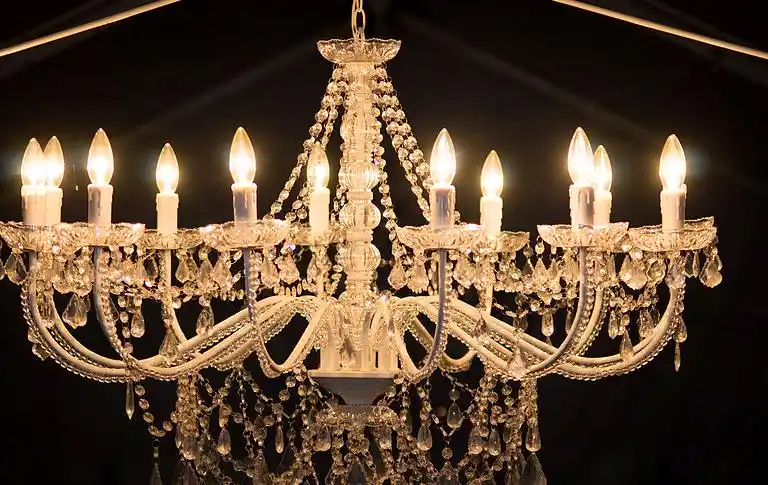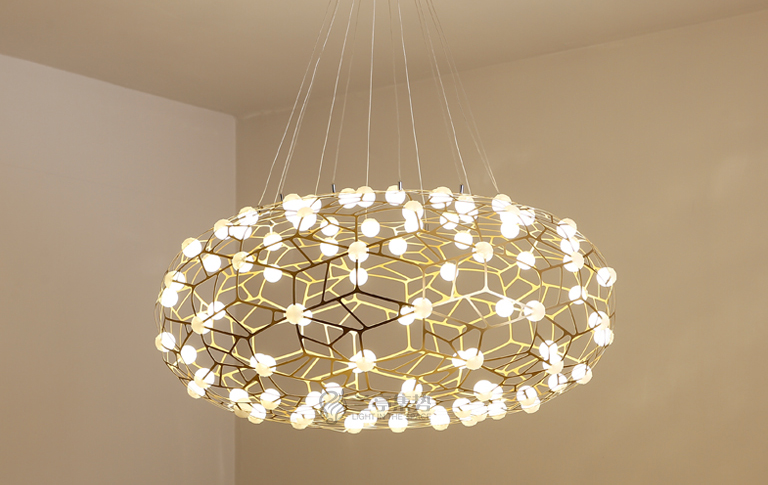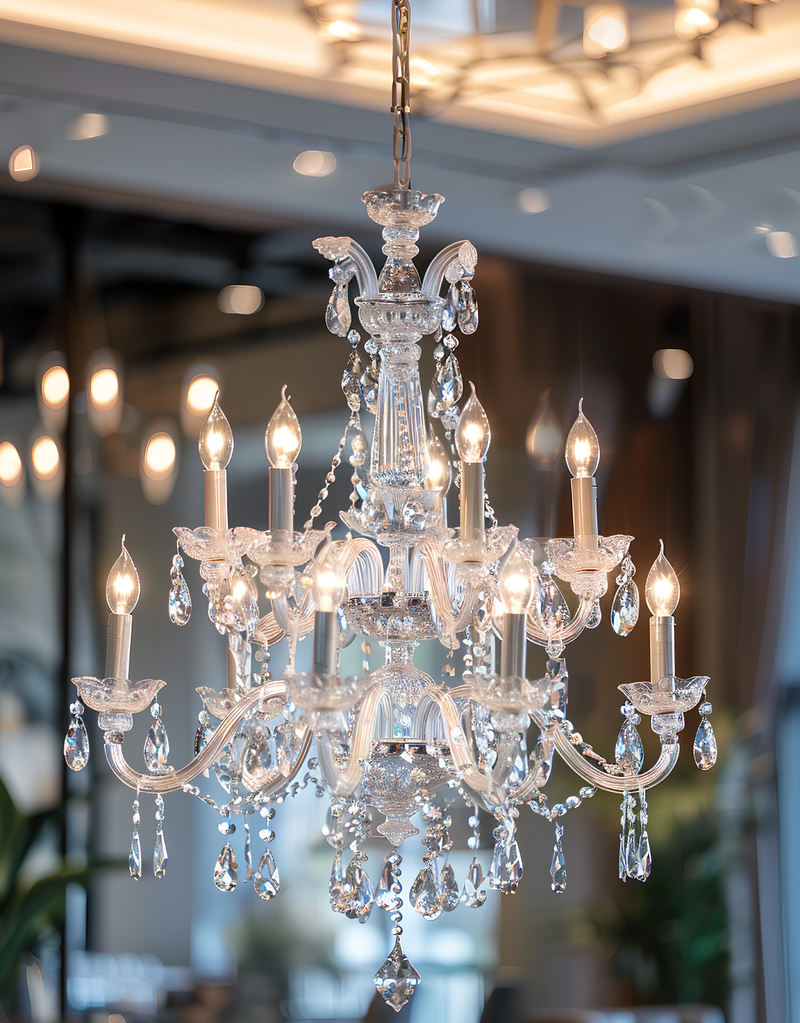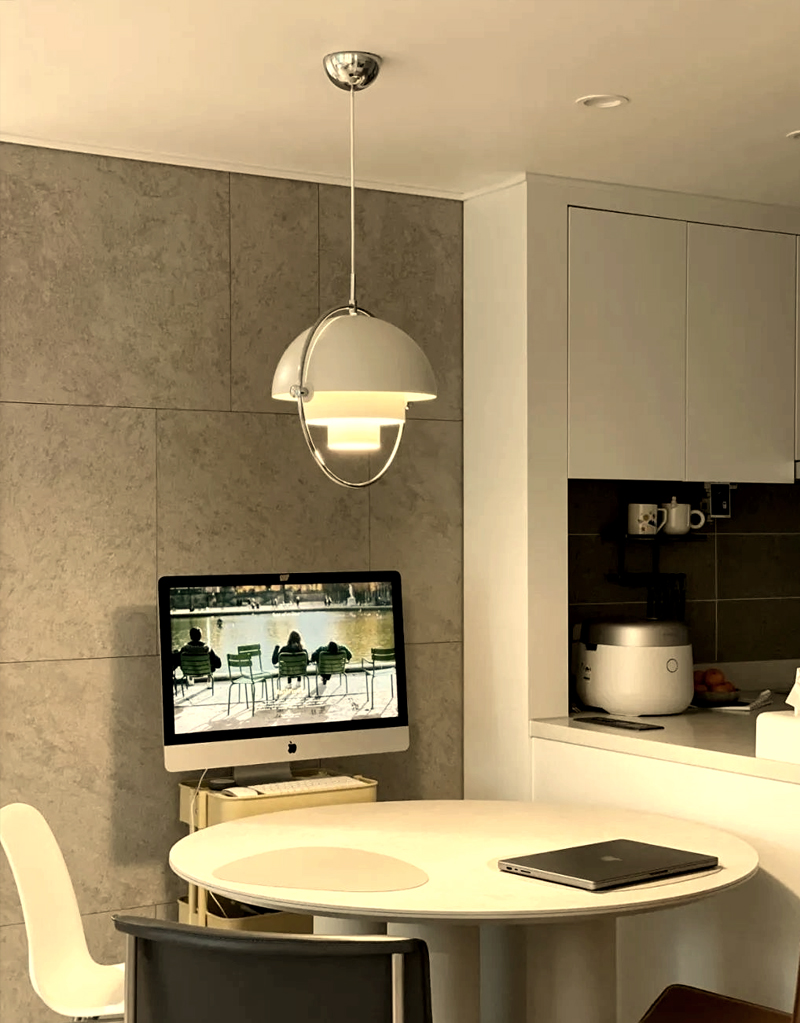Lighting Purchase Guide: Analyzing the Core Differences between Chandeliers and Pendants
In the field of interior design, lighting devices are like the finishing touch of a space. Among them, chandeliers and pendants are mainstream lighting products. Although they both have decorative attributes, they are clearly different in design concepts, functional characteristics, and applicable scenarios. Next, we will deeply analyze the essential differences between the two from multiple dimensions to help you make accurate choices based on space needs.
I. Category Definition and Development History
1.1 Chandelier
Chandeliers are characterized by their complex three-dimensional structure. They are usually composed of multiple lamp arms distributed radially, with candle-shaped lamp holders or modern light sources. Its historical origins can be traced back to the European aristocratic court period, and it was once a symbol of power and wealth. Today, chandeliers have evolved into a variety of styles, including classical crystal styles and industrial metal styles, combining historical heritage with modern design concepts.

1.2 Pendant Light
Chandeliers are mainly suspended from the ceiling with a single body, and are suspended through cables, metal rods and other components. Compared with the gorgeous decoration of chandeliers, chandeliers pay more attention to simple lines and practical functions. From Nordic-style glass-covered chandeliers to new Chinese-style wooden pendant lamps, chandeliers can be flexibly adapted to various scenes.

2. Design aesthetics and space positioning
In terms of visual positioning, chandeliers are the visual focus of the space. With crystal refraction, metal carvings and other details to create a luxurious atmosphere, they are suitable for use as the centerpiece of restaurants and villas with high-rise living rooms. The chandelier plays a role in reconciling styles, integrating simple shapes into the overall design. It can be hung above the dining table alone or arranged in groups above the kitchen island.
In terms of material application, chandeliers often use high-end materials such as crystal, brass, and natural stone, and focus on the texture of handmade craftsmanship, such as Swarovski crystal chains and gilded lamp arms. The material selection of chandeliers is more extensive, including glass, acrylic, rattan, concrete, etc., emphasizing the coordination and unity of materials and space styles, such as industrial-style cement chandeliers and Japanese-style bamboo chandeliers.
III. Functional logic and lighting scenes
3.1 Chandelier: Master of atmosphere creation
The lighting characteristics of the chandelier are that multiple light sources are distributed in a divergent manner, which can achieve 360° all-round lighting, and are suitable for providing basic lighting for large spaces (such as living rooms with an area of more than 20㎡ and banquet halls with a floor height of ≥3.5 meters). After matching with the dimming system, it can create a warm halo in the dinner scene, and can also provide soft background light in daily use, taking into account both the sense of ceremony and comfort.

3.2 Chandelier: Expert in task lighting
The chandelier uses a focused downlight source, and the beam angle is generally between 60° and 90°, which can accurately illuminate functional areas such as the kitchen workbench and the desk reading area. The "chandelier array" design that has been popular in recent years, such as a combination of 3 chandeliers of different heights, can not only meet the lighting needs of a long dining table, but also enhance the sense of spatial hierarchy through a staggered layout.

IV. Installation requirements and space adaptation
In terms of load-bearing requirements, chandeliers need to have load-bearing brackets embedded in the ceiling. The conventional load-bearing capacity is ≥30kg. Large crystal chandeliers require professional electricians to survey the installation point structure. Most styles of chandeliers have a load-bearing capacity of ≤10kg and can be directly fixed on standard ceiling sockets, making them suitable for self-installation.
In terms of floor height adaptation, chandeliers are recommended to be installed in spaces with a floor height of ≥2.8 meters. The bottom of the lamp body should be kept at a safe distance of 1.8-2.2 meters from the ground to avoid a sense of oppression. The hanging height of the chandelier can be flexibly adjusted, and it is even suitable for small apartments with a floor height of 2.4 meters. The space utilization rate can be improved by installing a short pole or tightening the cable.
V. Budget range and value expression
The price range of chandeliers is relatively wide. The price of basic iron chandeliers is about 2,000-5,000 yuan, while the price of all-crystal handmade custom-made chandeliers can reach tens of thousands of yuan. Its value is mainly reflected in the material craftsmanship and brand premium, such as Baccarat crystal chandeliers.
Chandeliers have a high cost-effectiveness. Internet celebrity styles of hundreds of yuan, such as glass ball chandeliers, can meet basic needs. High-end designer styles, such as Tom Dixon copper chandeliers, are priced in the range of thousands to tens of thousands of yuan, and pay more attention to modeling creativity and brand design.
VI. Purchase suggestions: How to make the right choice?
If you pursue the ritual sense and art collection value of the space, and the budget is sufficient and the installation space height conditions are suitable, the chandelier can become a "space sculpture"; if you pay more attention to the practicality of lighting, the convenience of style change, or need to adapt to small apartments and flexible transformation scenes, chandeliers are an ideal choice that takes into account both practicality and beauty.
After removing the table, the above content has been reorganized into text. If you want to adjust the content structure, language style, etc., please feel free to contact me

